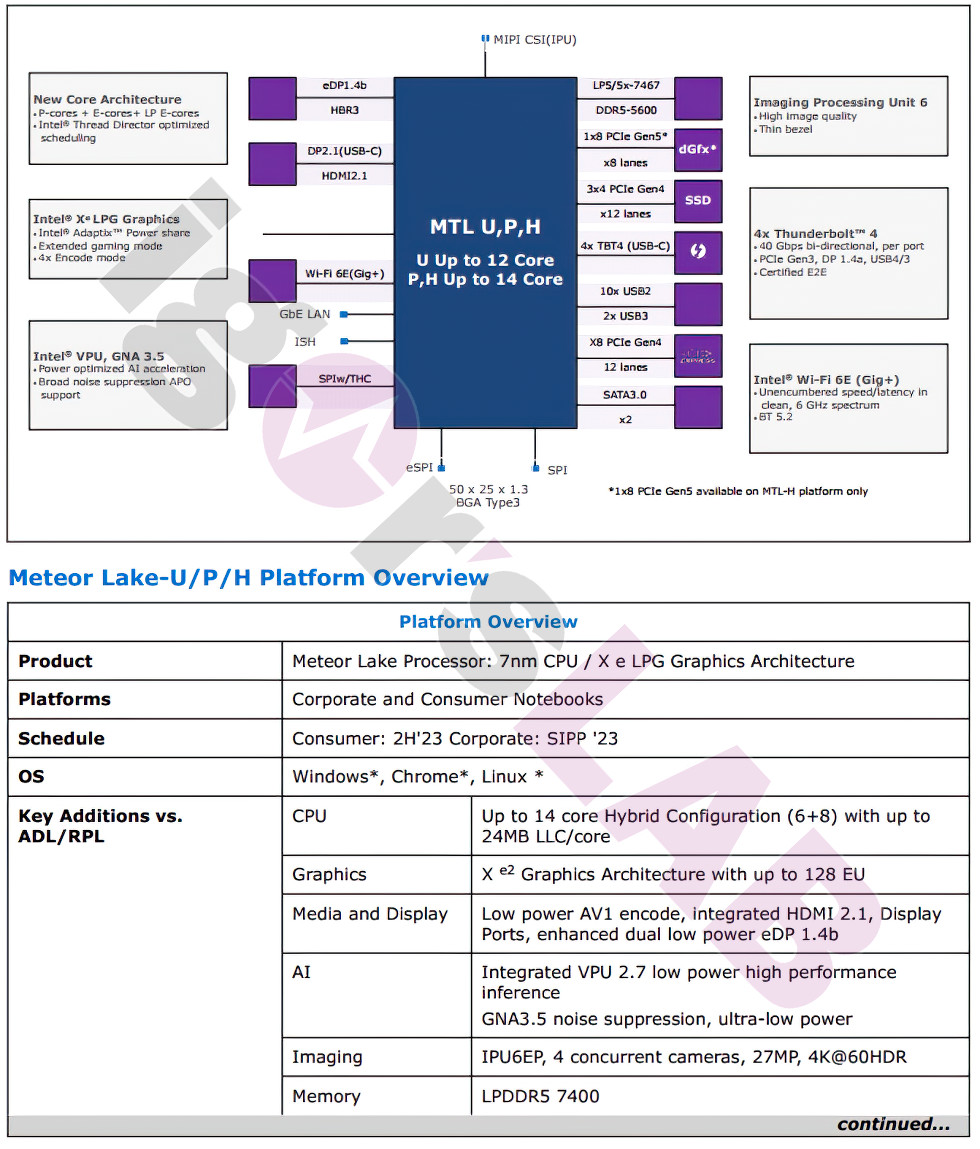Intel Meteor Lake processors will happen successors to Raptor Lake, a generation that hasn’t arrived yet, though it won’t be long since it’s set to debut later this year. There is no definitive date yet, but most likely it will be launched between September and October.
We already knew a lot about Intel’s Meteor Lake processors, including that they will be based on two completely new architectures, one used for high-performance cores and the other used for high-efficiency cores. We also knew that this new generation would be manufactured on an Intel 4 node that uses a 7nm manufacturing process, although it will have a higher transistor density than TSMC’s 5nm node:
- TSMC 5nm: up to 171 million transistors per square millimeter.
- Intel 7nm: up to 250 million transistors per square millimeter.
Thanks to new information shared by igor’sLAB, we were able to expand on everything we knew about Intel Meteor Lake, even though the source was limited to talking about U series processorsultra-low consumption for use in ultra-light notebooks, P-serieswhich will offer a better balance between performance and consumption, and H-serieswhich will focus on delivering high performance.

Intel Meteor Lake-H and P will have up to 14 cores
The diagram that the attached image collects is quite clear and groups all the details of these three new variants of Meteor Lake for notebooks. The H and P series will have the configuration up to 14 cores which in principle should be divided into 6 high-performance cores and 8 high-efficiency cores. The ultra-low-power U series will remain at 12 cores, which will be spread over 4 high-performance cores and 8 high-efficiency cores.
We don’t have details on the specific architectures that Intel will use at the CPU level in Meteor Lake, but we can expect significant IPC improvements as they will be applied to both core blocks, while in Raptor Lake only the high-performance cores will use the new architecture. . It is also important to note that the transition to the Intel 4 process will allow improve performance by 20% while maintaining the same consumption.
Otherwise Intel Meteor Lake series H, P and U will support DDR5 memory at 5600 MHz or LPDDR5-LPDDR5x at 7467 MHz, will be compatible with the PCIe Gen5 standard (8 lanes) and will also offer up to 12 PCIe gen4 lanes. The usual support for Thunderbolt 4 connectors or Wi-Fi 6E technology will not be missing, and they will be complemented by integrated Intel Xe LPG graphics and “Imaging Processing Unit 6”, capable of working with up to 4 cameras, 27 MP. and 4K at 60fps with HDR.
The introduction of Intel Meteor Lake processors will take place in the second half of 2023, probably between October and November of that year, unless there are major delays.














